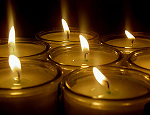 Rav Yosef Karo, Beis Yosef, Shulchan Aruch, Kesef Mishneh,and Magid Meisharim, (1488-1575). His first major work, the Beis Yosef is a comprehensive commentary on the Tur; it took 20 years to write. In
Rav Yosef Karo, Beis Yosef, Shulchan Aruch, Kesef Mishneh,and Magid Meisharim, (1488-1575). His first major work, the Beis Yosef is a comprehensive commentary on the Tur; it took 20 years to write. In
it, he gathered the opinions and decisions of all the major authorities up until his time and cross-referenced them. He ruled between differing views on the basis of a consensus between the three preeminent halachic authorities, the Rif, the Rambam, and the Rosh. The work was completed in 1542, but he continued to refine it for the next 12 years, and published a second edition. After he had completed the Beis Yosef, Rav Caro made a summary of his rulings in the form of an index without reference to sources and titled it Shulchan Aruch (“Laid Table”). It was completed in 1555 in Israel; it was first published in Venice in 1565. Eventually, the Rama’s gloss (called HaMapa — “The Tablecloth”) was published together with the Shulchan Aruch in Cracow in 1578, and together they became the universally recognized Code of Jewish Law. The Rambam had published his Mishna Torah without references for his rulings. The Maggid Mishna, a commentary on Mishneh Torah written by Rabbi Vidal di Tolouse, had referenced six of the fourteen sections of the work, and Rav Caro set out to complete the references, while at the same time explaining the Rambam’s view and defending it from the Raavad. The Kesef Mishneh, as it was called, was published in Venice between the years 1574-76.
-Rav Moshe ben Chaim Alshich (1508-1593) [others say 1522-1570]. Born in Adrianople, Turkey, student of Rav Yosef Karo in Adrianople and Rav Taitatzak in Salonica. He authored Toras Moshe. His students included Rav Chaim Vital and Maharitatz (Rav Yom Tov ben Moshe Tzahalon). He became a member of the Beis Din in Tzefas and is buried in Tzefas.
-Rabbi Menachem Mendel Schneerson, the Tzemach Tzedek, third Lubavitcher Rebbe (1789-1866).
-Rav Yoel Moskovitz of Shatz, great-grandson of Rav Yechiel Michel of Zlotchov. He was betrothed at the age of thirteen to Rebbetzin Miriam, the youngest daughter of Rav Meir of Premishlan. Rav Yoel served as a rav in Vornika and Solitza and, after Rav Meir’s passing in 1850, he set up his court in Shatz, a town in the Bukovina district of Moldavia, an area that straddled modern-day Romania, Ukraine and Hungary. Shatz is now called Suceava or Suczawa. Although Shatz was Moldavia’s capital between 1388 and 1565, it was a provincial backwater of the Austrian Empire by the 19th century. According to a 1880 census the town had 3,750 Jews who constituted 37% of the town’s total population of 10,104. Today’s population of over 100,000 people includes almost no Jews.
Today in History – 13 Nissan
· Avraham Avinu performed bris milah on himself, 1716 BCE.
· Chizkiyahu Hamelech became sick 3 days before Sancheriv’s downfall (Seder Olam 23) and Yeshayahu came to visit him and predicted his death, 546 BCE. Chizkiyahu davened facing the wall (Brachos 10b) and Hashem granted him 15 more years of life.
· Haman wrote the decree of destruction against the Jews (Esther 3:12-15) in 356 B.C.E.; Mordechai donned sackcloth and Esther asked all the Jews to fast (According to Esther Rabba 8, beginning on this day; according to Rashi in Mesechta Megilla, beginning on the 14th of Nissan.)
· British troops were halted in the first Battle of Gaza after 17,000 Turks blocked their advance during World War I, 1917.
· The emergence of the Nazi Party, 1920.
{Yahrtzeits licensed to Matzav.com Newscenter by Manny Saltiel and Anshe.org/Chinuch.org}











